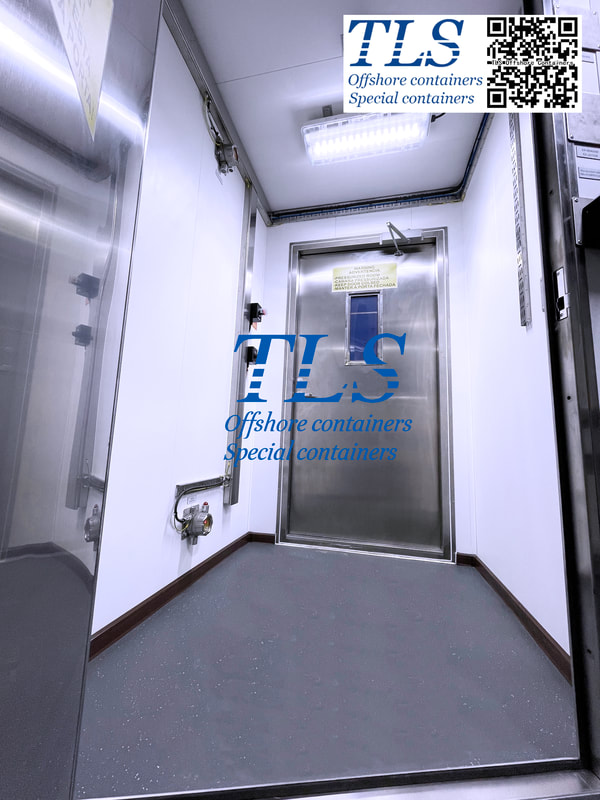|
The Airlock Room: A Critical Component for Pressure Container Safety and Functionality Pressure containers are marvels of engineering, designed to maintain specific air pressure levels within their confines. This controlled environment is essential for various purposes, from research to offshore drilling and aerospace exploration. But have you ever wondered why there's an airlock room in these containers? What purpose does it serve, and why is it indispensable? In this article, we will explore the functions and necessity of the airlock room in pressure containers, revealing its crucial role in ensuring safety, efficiency, and comfort within these specialized environments. Function and Necessity of the Airlock Room in a Pressure Container The airlock room, located within the pressure container, is a vital space that plays several key roles: 1. Pressure Balance Maintenance: One of the primary functions of the airlock room is to maintain pressure balance. The interior of a pressure container typically operates at a specific air pressure, which may be higher or lower than the external environment. This pressure differential is crucial for various processes and safety measures. The airlock room serves as a transitional buffer zone, allowing individuals and equipment to enter or exit without compromising the pressure in the main chamber. 2. Safety First: Without the airlock room, opening the main door of a pressure container directly to the external environment could lead to rapid pressure equalization, resulting in potentially dangerous consequences. For example, if the main chamber's pressure is higher than the outside, a sudden release of pressure could harm people, equipment, or materials. Conversely, if the main chamber's pressure is lower, rapid exposure to external air could cause decompression sickness in individuals. 3. Pressure Monitoring: Within the airlock room, an inner door controls access between the main chamber and the external environment. Pressure monitoring devices in the container ensure that the pressure inside the main chamber stays within safe and specified limits during entry and exit procedures. 4. Emergency Escape: In cases of crisis or emergencies within the main chamber or the airlock area itself, escape doors can be strategically installed on walls away from the airlock area. These doors provide alternative exit routes for personnel, significantly enhancing safety within the pressure container. 5. Comfort and Efficiency: In environments with limited space and challenging conditions, such as offshore platforms, the airlock room contributes to the comfort and efficiency of personnel working inside the pressure container. It allows for controlled access and egress, minimizing discomfort or health risks associated with rapid pressure changes. In summary, the airlock room is a critical component of pressure containers, ensuring the safety and well-being of personnel and equipment by maintaining pressure differentials, providing controlled access, and offering emergency escape routes when necessary. Its multifaceted functions make it indispensable in various industries where maintaining precise pressure environments is a must. The next time you encounter a pressure container, remember the crucial role played by the unassuming airlock room within. TLS Offshore Containers / TLS Special Containers is a global supplier of standard and customised containerised solutions.
Wherever you are in the world TLS can help you, please contact us. #PRESSURIZED CONTAINER #ZONE1 #ZONE2 #LAB CONTAINER #OFFICE CONTAINER #AIRLOCK ROOM #SPECIAL CONTAINERS Comments are closed.
|
Archives
July 2024
Categories
All
|
- Home
-
Containerised solutions
- Intelligent pressurised container | MUD logging cabin
- Battery energy storage system (BESS) container
- Flexible grid tied battery storage system
- Laboratory container | workshop container | Equipment containers
- Temporary refuge shelter | Toxic gas refuge | Safe haven
- Offshore accommodation cabin | office container
- Reefer container | Refrigerated container
- Intelligent waste water treatment container
- Fresh water generator container
- Cargo Containers
- Product photos & videos
- News & Blogs
- Contact us
|
Featured products
Intelligent pressurised container Temporary refuge (TR) shelter, toxic gas refuge (TGR) Battery energy storage system (BESS) container Containerised waste water treatment plant Fresh water generator container Reefer container Laboratory container, Workshop container Accommodation container Offshore closed container |
All Rights Reserved 2020 © TLS Offshore Containers / TLS Energy
|



